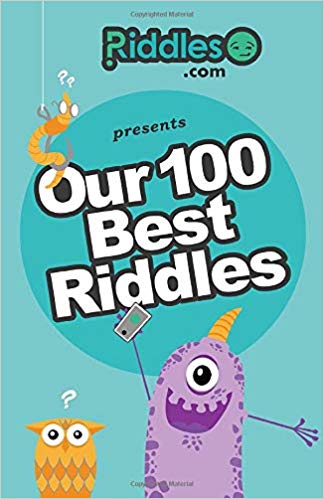Enter a keyword into the search box. The riddle search will check to see if the word is in the Title, Riddle, or Answer and return results if they exist.
"Ses" Riddles - Final 4 of 184
Riddle:
A woman is walking down a street night at a constant pace. As she passes the street light, she notices that her shadow becomes longer. Does the top of her shadow move faster, slower or the same when the shadow is longer as when it is shorter?
Answer: This point maintains a constant speed, independent of the lenght of the shadow.
Riddle:
WYISDERSOMENIMORORSIZASIZDENDERISORSIZ? What does this say?
Answer: Why is there so many more horses asses than there is horses?
Riddle:
Angry and Hungry are two words ending in 'gry" There are three words, (Using popular terminology) in the English Language, that ends in "GRY".
The word is something that everyone uses every day. If you have listened carefully, I have already told you what it is. What is the third word?
Answer: The answer is terminology. It's the third word ending in gry. Using popular terminology
Riddle:
A man told his son that he would give him $1000 if he could accomplish the following task. The father gave his son ten envelopes and a thousand dollars, all in one dollar bills. He told his son, "Place the money in the envelopes in such a manner that no matter what number of dollars I ask for, you can give me one or more of the envelopes, containing the exact amount I asked for without having to open any of the envelopes. If you can do this, you will keep the $1000." When the father asked for a sum of money, the son was able to give him envelopes containing the exact amount of money asked for. How did the son distribute the money among the ten envelopes?
Answer: The contents or the ten envelopes (in dollar bills) should be as follows: $1, $2, $4, $8, $16, $32, $64, $128, $256, $489. The first nine numbers are in geometrical progression, and their sum, deducted from $1,000, gives the contents of the tenth envelope.
Answer explained: The son distributed $1000 into ten envelopes using a clever binary-like approach to ensure he could provide any exact amount from $1 to $1000 by handing over a combination of envelopes without opening them. The first nine envelopes contain amounts that are powers of 2: $1, $2, $4, $8, $16, $32, $64, $128, and $256$, which total $511. The tenth envelope holds the remaining $489 ($1000 - $511$).This setup works because the first nine envelopes can form any amount up to $511 through unique combinations, much like binary numbers. For amounts between $489 and $1000, the son uses the $489 envelope plus a combination of the first nine envelopes to cover the difference—for example, $512 = $489 + $23$, where $23 is made from $16 + $4 + $2 + $1$. This ensures every possible amount from $1 to $1000 can be achieved with a unique combination of envelopes.
Answer explained: The son distributed $1000 into ten envelopes using a clever binary-like approach to ensure he could provide any exact amount from $1 to $1000 by handing over a combination of envelopes without opening them. The first nine envelopes contain amounts that are powers of 2: $1, $2, $4, $8, $16, $32, $64, $128, and $256$, which total $511. The tenth envelope holds the remaining $489 ($1000 - $511$).This setup works because the first nine envelopes can form any amount up to $511 through unique combinations, much like binary numbers. For amounts between $489 and $1000, the son uses the $489 envelope plus a combination of the first nine envelopes to cover the difference—for example, $512 = $489 + $23$, where $23 is made from $16 + $4 + $2 + $1$. This ensures every possible amount from $1 to $1000 can be achieved with a unique combination of envelopes.

